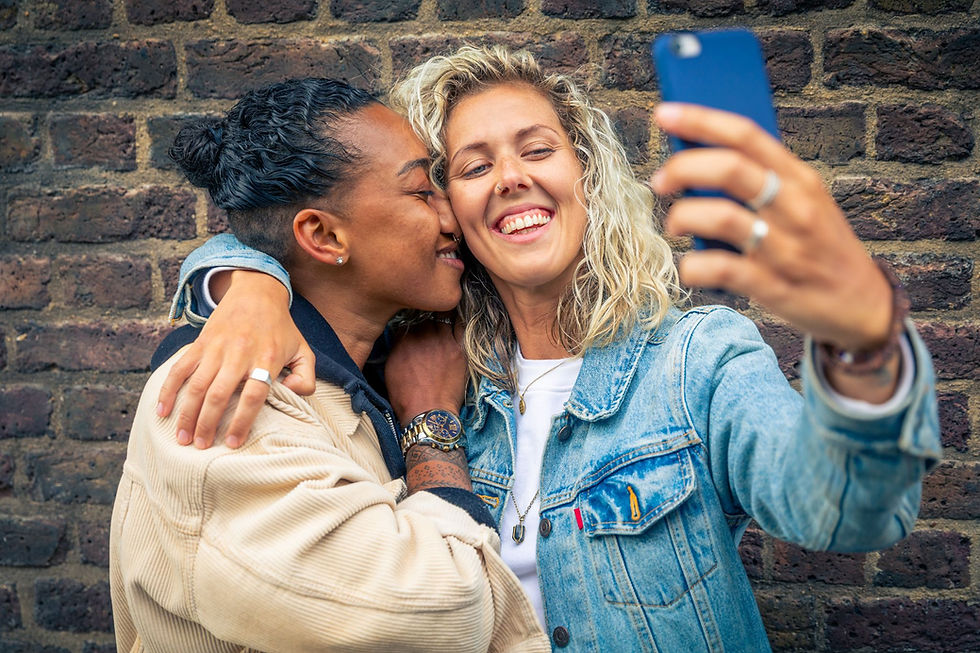
Sexual orientation is a person’s patterns of sexual, romantic, and emotional attraction. It’s not something that’s necessarily visible to others, and a person may not act on their attractions or sexual feelings.
While society tends to focus on three sexual orientations—heterosexual, bisexual, and homosexual—our understanding of sexual orientation has expanded over time to include new identities.
In general, sexual orientations include:
Heterosexual: Attraction to people of the opposite sex
Bisexual: Attraction to people of either sex
Homosexual: Attraction to people of one’s own sex
Pansexual: Attraction to people of any gender identity
Asexual: Not sexually attracted to other people
Not everyone will identify with any of these labels. And people who are unsure about their sexual orientation sometimes call themselves questioning or curious.
Why Does It Matter?
Sexuality and sexual orientation are important parts of who we are. Our sexuality is not just about reproduction. It impacts how we see ourselves and relate to others.
Most experts agree that a person’s sexual preference isn’t a choice and can’t be changed. But a person may not discover their sexual orientation until later in life, especially if they’ve been conditioned or pressured to conform to a particular orientation based on their sex or gender.
It’s possible for a person to have fantasies about people of the same sex without being homosexual or bisexual—and without pursuing those attractions. And it’s important to point out that sexuality can be fluid. A person’s sexual behavior may change in different situations for some people or over the years for others.
Sexual Orientation vs. Gender Identity
Sexual orientation and gender identity are sometimes confused, but they’re not the same.
Sexual orientation is who a person is attracted to, while gender identity is a person’s internal sense of being male, female, or non-binary—in other words, who they are inside.
Gender, meanwhile, is even more complex. It’s a set of socially constructed roles and expectations about how a person should think, behave, and present themselves based on their assigned sex at birth. For some people, their assigned sex at birth matches with their gender. For others, it doesn’t.
Sexual Orientation Throughout History
There are examples of same-sex love and sexual fluidity in every documented culture throughout history. This shatters the idea that being gay is unnatural or—as some claim—evil.
This doesn’t mean that non-heterosexual relationships have always been accepted everywhere. But there are many documented examples of cultures throughout history accepting and even revering homosexual, bisexual, and gender non-conforming community members.
Prior to European colonization, for example, many indigenous tribes in the Americas acknowledged gay, bisexual, and gender non-conforming individuals. These folks were called “two spirit” and often filled special religious roles as healers, shamans, and ceremonial leaders—a tradition that persists to this day in many communities.
The quariwarmi shamans of Pre-colonial Andean culture wore androgynous clothing to acknowledge a “third space” between the masculine and the feminine.
And in the Czech Republic in 2011, archaeologists unearthed the remains of a person they believe may be the oldest known homosexual or transgender man. They based their hunch on how the body was buried.
These are just a few of many examples. A report by the American Psychological Association on the history of transgender, lesbian, gay, and bisexual movements put it this way:
“From the lyrics of same-sex desire inscribed by Sappho in the seventh century BCE to youths raised as the opposite sex in cultures ranging from Albania to Afghanistan; from the “female husbands” of Kenya to the Native American “Two-Spirit,” alternatives to the Western male-female and heterosexual binaries thrived across millennia and culture.”

Creating a More Inclusive World
Despite ongoing attacks on their communities and the perpetuation of harmful myths, LGBTQ+ individuals have shown enormous courage and tenacity in fighting for equality, dignity, and respect. But they shouldn’t have to fight or show extraordinary courage just to exist. This needs to change.
You can help by supporting initiatives to advance LGBTQ+ rights and by calling out hate wherever you see it. Together, we can create a more beautiful, inclusive world.
Want more great content?
DCP Entertainment is your destination for the underrepresented voice. We elevate the voices of people of color, women, and LGBTQ+ communities, engaging listeners with relevant, thought-provoking stories you won’t find anywhere else.
Check out all our podcasts at https://www.dcpofficial.com/.
Comments